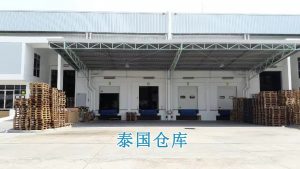Adhesion promoter
Pure rubber rubber products are often difficult to meet actual use needs. Most rubber products require composite manufacturing using skeleton materials as the main stress-bearing part. The skeleton materials also play an important role in the stability of the shape of rubber products during use. The strong combination of rubber and frame material can not only protect the frame material, but also the reinforcing effect of the frame material can be fully exerted.
Rubber products have different requirements for skeleton materials. In terms of material, they mainly include metal, natural fiber and synthetic fiber. In terms of structure, they mainly include canvas, rope, cord, etc. Different adhesives should be selected for different composite products. The types of adhesives are shown in Table 1.8.1-26.
Note a: “Catalogue of Substitutes for Toxic and Hazardous Raw Materials (Products) Encouraged by the State (2016 Edition)” (Ministry of Industry and Information Technology [2016] No. 398) will be used for impregnation and treatment of tire cord fabric, rubber conveyor belt canvas, etc. An alternative to phenolic resin (RFL) impregnating agent for impregnating various types of cords. Curtain canvas NF impregnating agent (condensation of the main components hexamethylenetetramine complex (RH) and hexamethoxymethylmelamine substance), solvent-free fiber cord impregnating agent (main components polymethylene polyphenyl polyisocyanate (polymer MDI), polyurethane, liquid rubber (HTPB)) are included in the R&D catalog, among which solvent-free fiber cord impregnating agent is currently The effective ones are polyurethane aqueous dispersions or polyurethane emulsions. Hydroxymethylation modification and amination modification of lignin are also possible important directions.
The surface treatment of the skeleton material and its adhesion to the rubber matrix are very important issues. In the past few decades, many studies have been conducted on the rubber bonding mechanism, but a unified understanding has not yet been reached. Research on the bonding mechanism of rubber and skeleton materials mainly includes the following types:

①Adsorption theory
Adsorption theory is the most popular adhesion theory. This theory believes that the adhesive and the adherend are bonded together through adsorption. The adhesion force is mainly caused by the mutual adsorption of molecules or atoms of the adhesion system near the adhesion interface to generate van der Waals forces and bond them together. The bonding process is mainly divided into two aspects. First, the adhesive molecules migrate to the molecular surface of the adherend through molecular motion. Pressure and high temperature are conducive to the process; secondly, when the molecules move to the surface of the adherend, When a small enough distance is reached, van der Waals forces come into play and gradually increase as the distance decreases. Adsorption theory regards adhesion as a surface process based on intermolecular forces. This theory believes that intermolecular forces are one of the main forms of adhesion. However, the adsorption theory is not universally applicable and cannot explain the bonding of the direct bonding system between rubber and copper-plated steel wire.
②Mechanical theory
Mechanical theory believes that adhesion is the penetration of the adhesive into the rough surface of the adherend, and mechanical forces such as hooking and anchoring are generated on the surface of the adherend to combine the adhesive and the adherend. Adhesives bond materials with surface treatments much better than materials with smooth surfaces. However, mechanical theory cannot explain the bonding of materials with smooth surfaces, such as glass and metal.
③Chemical bond theory
Chemical bond theory is the current systematic and ancient theory. Chemical bonding theory refers to the strong adhesion between two phase materials obtained by forming chemical bonds at the bonding interface. The chemical bond force is much greater than the intermolecular force and can produce good bonding strength. The chemical bond theory has been confirmed by various experimental facts, such as the bonding of rubber to copper-plated steel wire.
④Diffusion theory
Diffusion theory, also known as molecular penetration theory, means that the mutual bonding of two-phase materials is accomplished through molecular diffusion. Diffusion creates a dense adhesive layer at the interface between the two phases, thereby combining the two-phase materials. This diffusion occurs through interpenetration at the bonding interface. Diffusion results in no obvious bonding interface between the two-phase materials, only the existence of a transition zone, and the bonding system can obtain good bonding performance through diffusion. This theory can well explain the adhesion between polymers with good compatibility, but it cannot explain the adhesion between rubber and metal.

⑤Electrostatic theory
Electrostatic theory, also known as electric double layer theory, refers to the phenomenon of discharge and emission of two-phase materials at the interface in a dry environment. But a lot of scienceA methylene acceptor that needs to be used in conjunction with 2.5 parts of binder A, binder RA resin and other methylene donors. This product should be added at the beginning of mixing, and the methylene donor should be added at the end of mixing. Invest.
The combined use of binder RE and binder A can improve the heat aging resistance, dynamic fatigue resistance and moisture resistance of the m-methyl-white system.
2.1.4, Adhesive RH
Chemical composition: Resorcinol-hexamethylenetetramine complex, molecular formula: C6H4(OH)2.(CH2)6N4, relative molecular mass: 250.31, decomposition temperature 120°C.
Structural formula:
Resorcinol and hexamethylenetetramine aqueous solution are complexed at 50°C, and the finished product is obtained after filtering, washing and drying. This product is mainly used as a methine donor in phenolic resin type adhesive systems; it can also be used alone as a rubber hardener. This product is slightly soluble in water and almost insoluble in organic solvents. A condensation reaction will occur at 110 to 120°C, releasing amines to form insoluble resin. This product can be used as a single component or as a methylene donor and methylene acceptor. It is generally added at the end of mixing when the glue temperature is below 90°C.
HG/T 2190-1991 “Binder RH for Rubber” is applicable to the product obtained by the complexation of resorcinol and hexamethylenetetramine – binder RH. The technical requirements of binder RH are shown in Table 1.8 .1-33.
2.1.5, Rubber adhesive A (adhesive HMMM, melamine resin)
Chemical name: hexamethoxymethylmelamine, hexahydroxymethylmelamine, 2,4,6-tris[bis(methoxymethyl)amino]-1,3,5-triazine, 2,4,6-Tris[bis(methoxymethyl)amino]-1,3,5-triazinehexamethoxymethylmelamine.
Structural formula:
Molecular formula: C15H30N6O6, relative molecular mass, 390.4353, CAS number: 3089-11-0, density: 1.205~1.220g/cm3, boiling point: 487°C, flash point: 248.3°C, vapor pressure: 1.23E- 09mmHg.
Binder A is produced by dissolving melamine in formaldehyde aqueous solution to obtain hexamethylol melamine, which is then condensed with methanol and separated by dehydration. This product is a methylene donor and needs to be used in conjunction with 2 to 5 parts of GLR-18, GLR-19, GLR-20, RE resin and other methylene acceptors. The methylene acceptor should be placed in the pre-mixing stage. This product should be added at the end of mixing. This product is easily dispersed in the rubber material and has better processing performance than hexamethyltetramine.
2.1.6, Adhesive RC
This product is produced by mixing AB-30 (a complex compound generated by graft copolymerization with melamine resin as the matrix and having the dual functions of formaldehyde donor and formaldehyde acceptor) and inorganic or organic carriers in a certain proportion. . This product has the dual functions of formaldehyde donor and formaldehyde acceptor. It is a meta-formaldehyde-white bonding system and is suitable for bonding rubber to various skeleton materials including galvanized steel wire, copper-plated steel wire, polyester, etc. It is especially suitable for bonding fluorine rubber to canvas, nylon, and aramid. When used, 10 to 15 parts of white carbon black or 0.5 part of cobalt salt can be used together.
2.1.7, melamine compounds
This product is a derivative of hexamethoxymethylmelamine and polyphenols. It is a waxy body obtained by heating and melting binder A and polyphenols, stirring and discharging, and cooling to room temperature. It is suitable for bonding rubber to copper-plated steel wire, glass fiber, rayon, polyester and polyamide and other skeleton materials. It is especially suitable for bonding fluorine rubber to canvas, nylon and aramid, and the effect is more outstanding. This product is easily dispersed in the rubber material, can improve the plasticity of the rubber material, has low heat generation, does not pollute the rubber material, and has good adhesion retention after aging; this product has the dual functions of methylene acceptor and donor. Components are used together with 10 to 15 parts of white carbon black. If used together with the cobalt salt system, the bonding effect will be better.
Structural formula:
In the formula, R is hydrogen or aralkyl or styrene.
Since the temperature of the first stage of rubber mixing can sometimes be as high as 160~180℃, resorcin will produce significant smoking at this temperature (the temperature at which R-80 starts to lose a lot of weight is 150℃), so usually , Resorcinol is generally added during the second stage of mixing. Since SL-3020 resin has been pre-condensed and modified, the weight loss temperature is close to 200°C, so SL-3020 resin can be added during the first stage of mixing; SL-3020 resin has better dynamic performance than R-80; scorch safety Higher than R-80, the vulcanization time is longer, which can obtain better adhesion performance, higher hardness and dynamic modulus.
The dosage of SL-3020 resin for the nail bonding system is 1.5 to 2.0 parts, and the ratio to HMMM is 1:1.0 to 1.5. Too much HMMM will prolong the vulcanization time. Generally it should be added during the second stage of mixing.